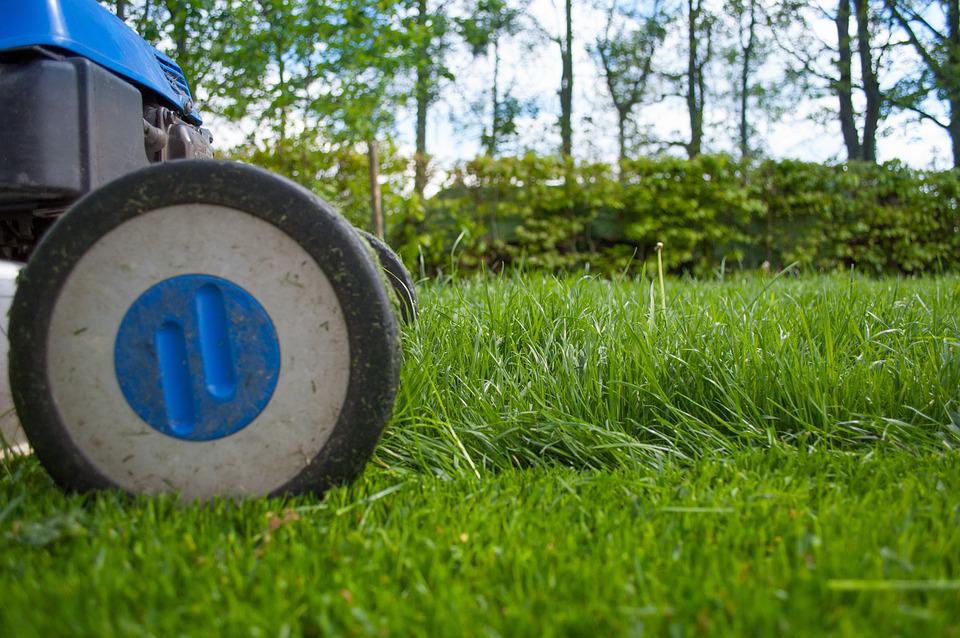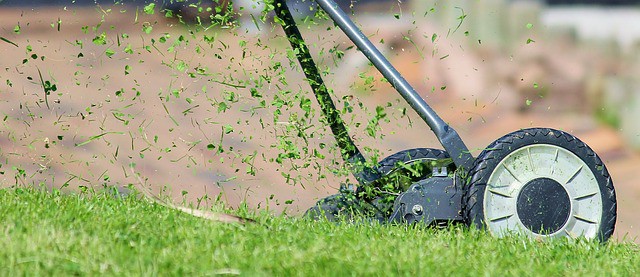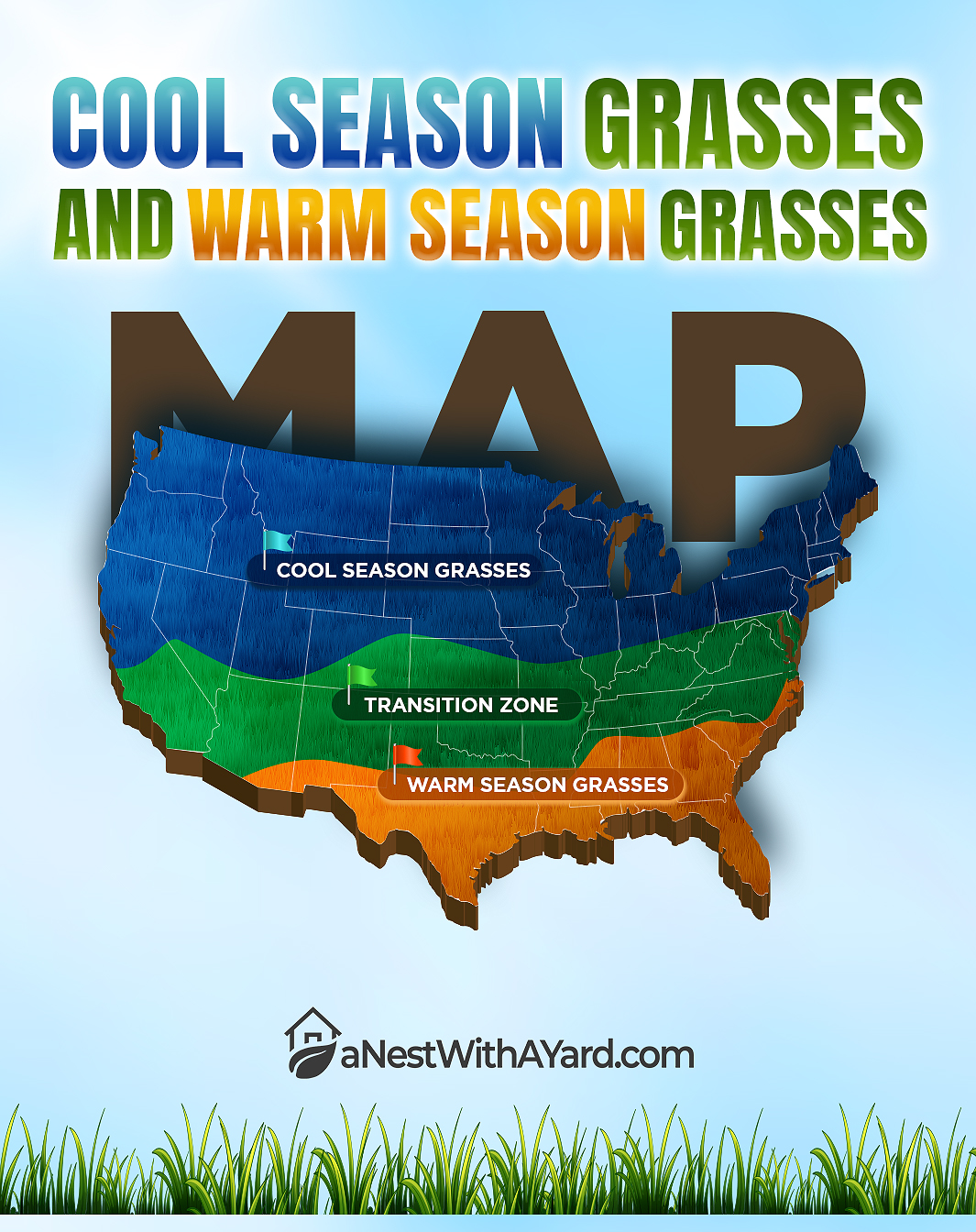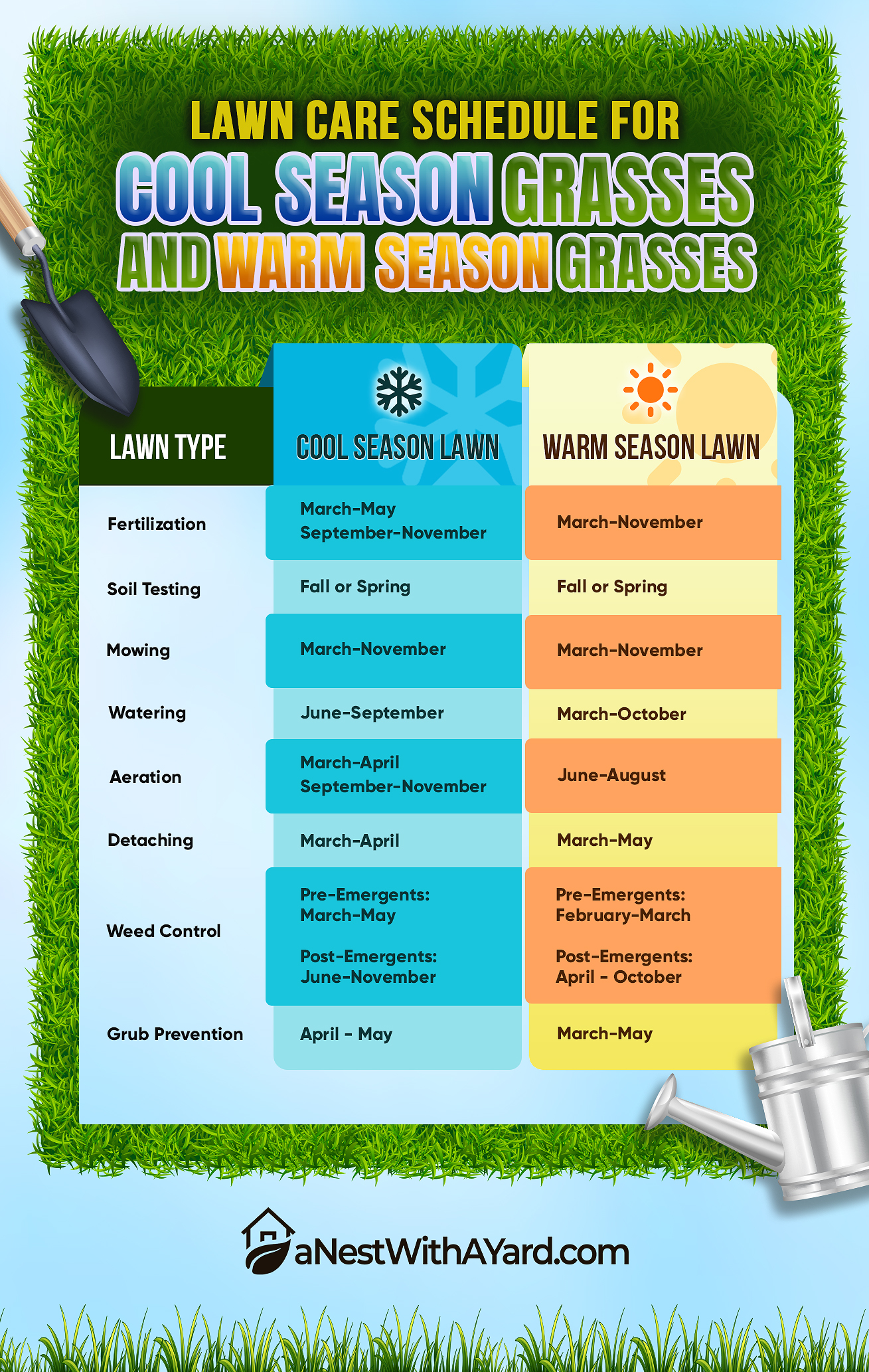Table of Contents
To set up the best lawn maintenance schedule, you must determine your lawn type. Then, you can provide year-round lawn care, including fertilization, soil testing, mowing, watering, aeration or dethatching, weed control, and application of herbicides, fungicides, and insecticides.
If you hope to enjoy a healthy, green lawn, you must ensure proper lawn maintenance. My experience and knowledge gathered over years of research and inevitable trial and error can help you determine your lawn type and set up the best annual lawn care schedule to prevent or remedy every problem.
So, for the best-looking lawn all year round, keep scrolling!
What Should The Best Lawn Schedule Include?

There is no better way to determine what proper law maintenance should include than looking at what professionals do! So, I resorted to reading an article on this subject, written by Dr. Anthony J. Koski, an Extension Turfgrass Specialist, and John R. Street, an Associate Professor Emeritus at the Department of Horticulture and Crop Science of the Ohio State University Extension. From them, I found out that professional lawn care service implies:
- Soil Testing
- Fertilization
- Mowing
- Watering
- Soil Cultivation: Aeration & Dethatching (1-2 times per year)
- Weed Control: Preemergence (2 times per year) and Postemergence (1-2 times per growing season, or as needed )
- Insects, Lawn grubs, And Disease Control (as needed)
According to the same authors, when needed, a lawn care program can include spot re-seeding and re-sodding. So, if professionals do all this, it is what we should do too! Let’s take a closer look at the most vital lawn maintenance elements from this list.
Fertilizer Application & Soil Testing

According to W.R. Kussow, S.M. Combs, A.J. Sausen, and D.J. Soldat from the University of Wisconsin-Madison, fertilization is a vital element of a lawn management program. To do it properly, you first must assess your lawn’s fertilizer needs by taking a soil sample once a year.
From my experience, a certified soil testing laboratory, such as the N.C. Department of Agriculture’s soil testing lab in Raleigh, tells you what your lawn needs and which fertilizer to use for the best possible results. It also advises you when and how often to fertilize your lawn.
As I read in this article, soil testing also includes measuring the soil’s pH, which shows the acidity or alkalinity of your soil. If the pH is too low, you’ll receive recommendations to use lime (it should be applied from May to August). Alfredo Martinez, Lee Burpee, and Tom Allen, from the University of Georgia, also suggest applying fungicides as a preventive measure.
I usually fertilize my lawn 2-4 times per year (depending on the soil analysis). In some states, such as Maryland, fertilization is regulated by law (in this case, the Maryland Department of Agriculture). So, check your state regulations.
Extra Advice:Don’t forget to mention whether the soil sample is taken from a new or established lawn. As I learned from the already-mentioned experts from the University of Wisconsin-Madison, laboratory recommendations might differ significantly.
Mowing & Watering

I use my lawn mower once a week during the intensive growing season of my grass (this can be in early/late spring or early summer, depending on your climate). After that, I switch to mowing every two weeks, and then once a month at the end of the season.
According to a pamphlet issued by Seattle Public Utilities in collaboration with turf professionals and scientists, you should set your mower blades to the mowing height of 2 – 3 inches for most lawns. As read, this fosters strong root growth and drought and
disease resistance.
The USA Environmental Protection Agency states that your lawn typically requires one inch of water a week, including rainfall. Overwatering may increase the need for pesticides and fertilizers. No need to water or mow during the winter dormancy!
Determining Your Lawn Type

It doesn’t matter if you want to hire professionals to take care of your lawn, or you do it yourself – you first have to determine your lawn type. Why?
As I read in an article published by Pennington, a company that has bred grass seed since 1945, the climate zone you live in has a great influence on what type of grass can thrive in your region. If you want a great-looking lawn with no dead grass, you must match the best cool or warm-season grass to your zone and then maintain it properly.
While browsing through some lawn care products on the DoMyOwn online retail website, I found a list of the most common cool-season and warm-season grasses in the USA. There are also so-called blend grasses (mixtures of cool and warm season grasses) used in the transition zone states.
| Cool Season Grasses (tolerate temperatures up to 75 degrees Fahrenheit) | Kentucky Bluegrass, Annual Ryegrass, Perennial Ryegrass, Fine Fescue, Tall Fescue, Creeping Bentgrass |
| Warm Season Grasses (tolerate temperatures up to 90 degrees) | Bahiagrass, Bermuda, Blend, Buffalograss, Carpetgrass, Centipedegrass, St. Augustinegrass, Zoysiagrass |
To learn more about warm and cool-season types of grass, watch the video below:
According to the same article, there are three main regions in the USA:
Region 1: States With Cool Season Grass
- Connecticut
- Delaware
- Idaho
- Iowa
- Massachusetts
- Maryland
- Maine
- Michigan
- Minnesota
- Montana
- Nebraska
- New Hampshire
- New Jersey
- New York
- North Dakota
- Oregon, Pennsylvania
- Rhode Island
- South Dakota
- Utah, Vermont
- Washington
- Wisconsin
- Wyoming.
Region 2: States With Warm Season Grass
- South Carolina
- Georgia
- Alabama
- Mississippi
- Louisiana
- Florida
- California
- Arizona
- New Mexico
- Texas
- Arkansas.
Region 3: States With Transition Or Blend Grass
- Illinois
- Indiana
- Kansas
- Kentucky
- Missouri
- North Carolina
- Ohio
- Tennessee
- Virginia
- West Virginia
- Oklahoma,
- Parts of some already listed states.
So, if you live in North Carolina, as I do, the choice of grass and lawn maintenance might be a bit tricky. My town is located in east-central N.C., where the hilly Piedmont region transitions into the flat coastal plain, so according to the recommendations I found in an article written by several professors from NC State University, I opted for a blend of Bermuda, Perennial Rye, Kentucky Blue Grass & Tall Fescue.
Thanks to the research conducted by Grady Miller, a professor of Crop & Soil Sciences, I picked out a top-performing Four Seasons blend developed by Starke Ayres, an expert lawn seed provider. It is perfect for warm inland areas, doesn’t require frequent watering like a traditional cool-season grass during summer, and tolerates cold winters.
Lawn Care Schedule For Cool Season Grasses & Warm Season Grasses

Properly scheduled lawn maintenance is a must if you hope you’ll enjoy a healthy lawn. I made a comprehensive guide with some help from the already-mentioned DoMyOwn online retail website for both cool– and warm-season lawns.
| Lawn Type | Cool Season Lawn | Warm Season Lawn |
| Fertilization | March-May September-November | March-November |
| Soil Testing | Fall or Spring | Fall or Spring |
| Mowing | March-November | March-November |
| Watering | June-September | March-October |
| Aeration | March-April September-November | June-August |
| Detaching | March-April | March-May |
| Weed Control | Pre-Emergents: March-May Post-Emergents: June-November |
Pre-Emergents: February-March Post-Emergents: April – October |
| Grub Prevention | April – May | March-May |
| Applying Fungicides | May-August | May-August |
| Applying Insecticides | March – September | March – September |
| (Re)seeding | August – October | May July |
If your lawn is in a transition zone like mine, find a bridging solution. The video below might help you:

FAQs
What should you do to your lawn every year?
You should conduct proper lawn maintenance every year. It includes soil testing, fertilization, regular mowing and watering, soil cultivation, weed control, insects, disease, and grub control.
When should I aerate my lawn?
You should aerate your lawn when during its peak growing period so it can recover rapidly. It is best to do it in early spring or fall for cool-season grass; and in late spring or early summer for warm-season types of grass.
Final Considerations

I am no lawn doctor (yet!), but I have sufficient experience to keep my lawn healthy throughout the year – even in the summer heat. I hope my article will help you achieve the same. Now you know exactly what to do in early spring or early summer, fall, and winter. So, go do it!
If you encounter any issues, you know where to find me. Please share this article with others. The more people know about the proper lawn care schedule, the greener our neighborhoods will be.


